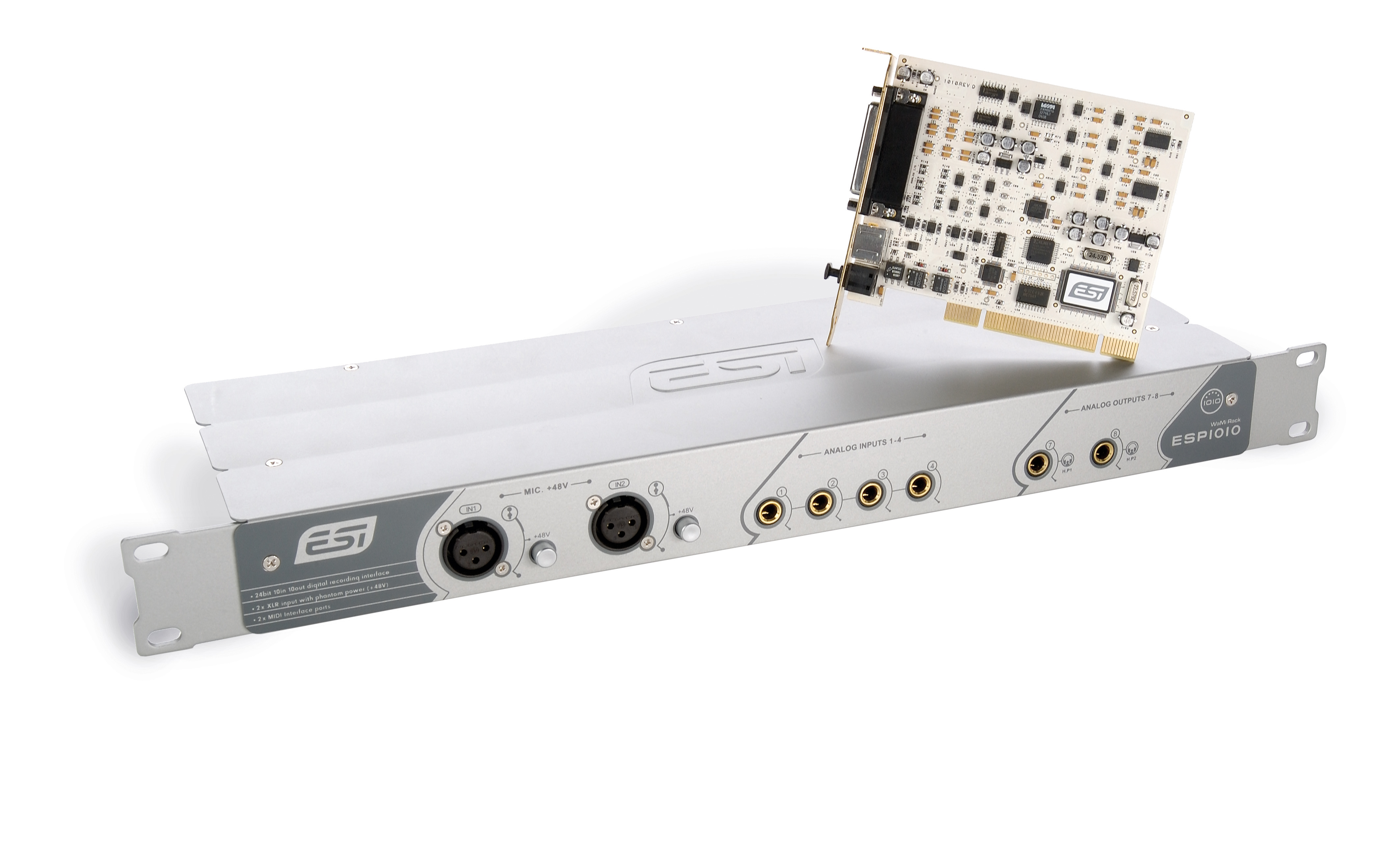MusicRadar Verdict
Great value, easy to use and well built. Just give us the power adapter and we'll ask for no more!
Pros
- +
DirectWIRE 3.0. Dead easy to set up. Beautiful software mixer and control panel. Sturdy and noise free. Stacks of I/O. Incredible value for money.
Cons
- -
No power adapter for 48V phantom power in the box. PC only.
MusicRadar's got your back
There's a massive range of good quality audio interfaces on the market these days, so picking one isn't easy.
Before you make a decision, you need to work out how much money you're going to spend and then consider which features you need.
You also need to think about how you might want to expand your audio setup in the future. It's rare that we stumble upon a system that appears to have all bases covered, but the ESP1010 looks almost too good to be true.
This 10-In/10-Out 24-bit/96kHz recording solution is positively bursting with features, including eight balanced/unbalanced analogue line inputs, eight analogue outputs and MIDI I/O.
All these connections are mounted on a 19" brushed aluminium rack that plugs into the supplied PCI card. Said card houses a D-pin connection to accommodate the composite breakout cable.
This provides S/PDIF I/O (on channels 9 and 10 of the interface) and a further two MIDI ports to augment those on the breakout rack. The rack meets the card through a heavily shielded and generously long connection cable.
The first two analogue ins are presented as XLR type microphone inputs and receive 12v phantom power from the PCI bus.
For 48v power, you'll need to plug in a wall-wart power adapter - unfortunately, this isn't supplied in the box.
In use
The ESP1010's big trick - the one that sets it apart from its rivals - is its extremely comprehensive and flexible driver architecture.
Like most typical interfaces, the 1010 supports ASIO 2.0, MME, WDM and GSIF driver models, but ESI's wholly unique DirectWIRE 3.0 technology also allows for the seamless passing of audio data between all of these drivers and between multiple applications.
In practical terms, this means that all your software can access and utilise the 1010's abilities at the same time and you have the ability to pass audio data between these programs at will.
Integrating your various software applications couldn't be any easier - never again do the signals from multiple applications need to access the outside world and this can only help to improve fidelity.
So, the ESI1010 is as good in reality as it is on paper. It's amazingly easy to install and integrate into your setup and provides all the I/O that you're likely to want in a single box.
And then there's the price: this is possibly the best value interface on the market.
Computer Music magazine is the world’s best selling publication dedicated solely to making great music with your Mac or PC computer. Each issue it brings its lucky readers the best in cutting-edge tutorials, need-to-know, expert software reviews and even all the tools you actually need to make great music today, courtesy of our legendary CM Plugin Suite.
"There’s plenty for us guitarists to learn – and ‘less is more’ is the overriding lesson": how to play like George Harrison on The Beatles' Abbey Road
“They didn’t like Prince’s bikini underwear”: Prince’s support sets for the The Rolling Stones in 1981 are remembered as disastrous, but guitarist Dez Dickerson says that the the crowd reaction wasn’t as bad as people think
“We are so unencumbered and unbothered by these externally imposed rules or other people’s ideas for what music should be”: Blood Incantation on the making of Absolute Elsewhere and how “Data from Star Trek” saved the album – and the studio











